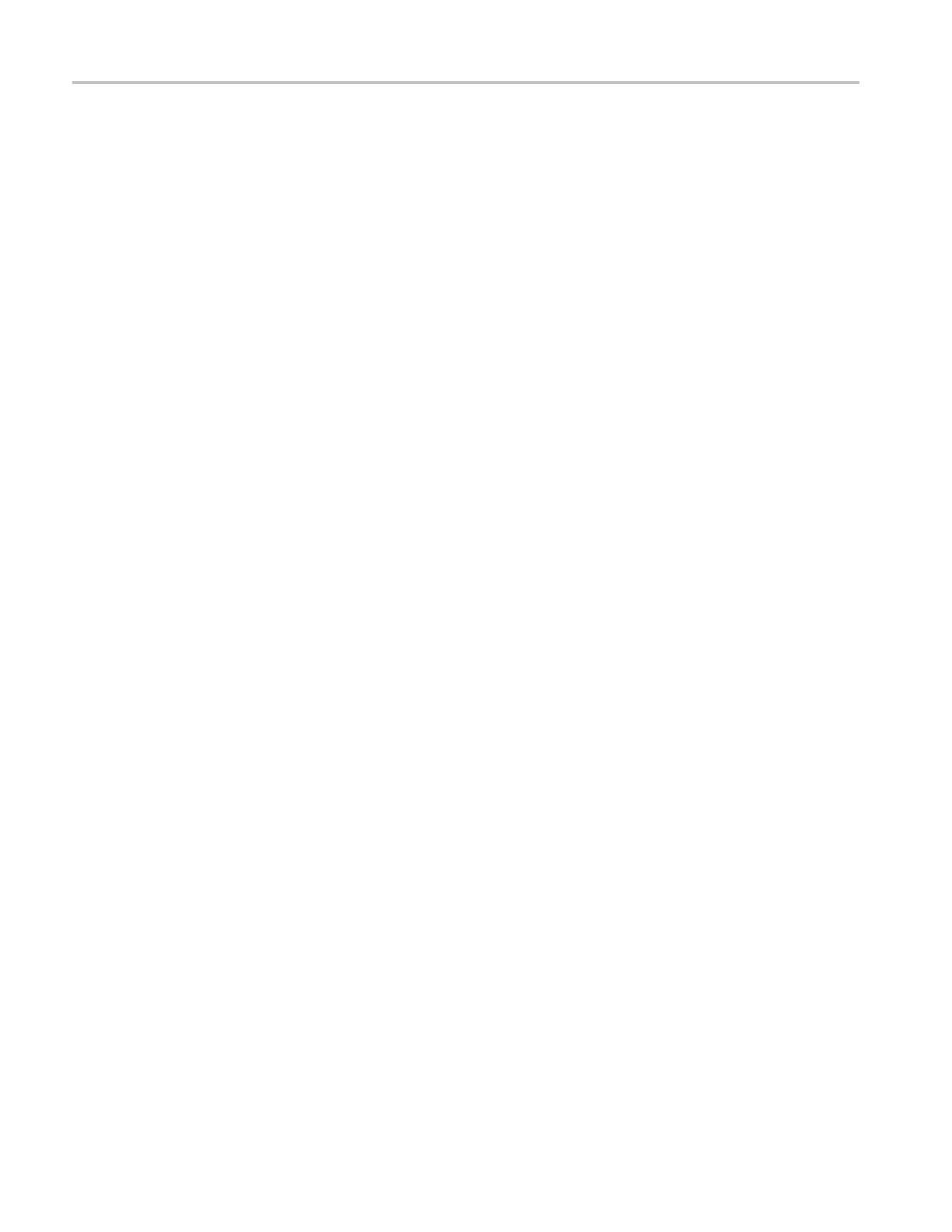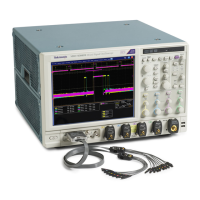Commands Listed in Alphabetical Order
Arguments
RISe specifies t
o trigger on the rising or positive edge o f a signal.
FALL specifies to trigger on the falling or negative edge of a signal.
EITHER specified to trigger on either the rising or falling edge of a signal.
Examples
TRIGGER:A:EDGE:SLOPE RISE sets the A edge trigger slope to positive, which
triggers on the rising edge of the signal.
TRIGGER:A:EDGE:SLOPE? might return :TRIGGER:A:EDGE:SLOPE FALL,
indicating that the A edge trigger slope is negative.
TRIGger:{A|B}:EDGE:SLOpe:AUX
This command sets or queries the slope for the edge trigger for the AUX In input.
This command is equivalent to selecting A Event or B Event Trigger Setup from
the Trig menu and the n choosing the desired Slope .
Group
Trigger
Syntax
TRIGger:{A|B}:EDGE:SLOpe: AUX {RISe|FALL|EITher}
TRIGger:{A|B}:EDGE:SLOpe: AUX?
Arguments
RISE specifies to trigger on the rising or positive edge o f a signal.
FALL specifies to trigger on the falling or negative edge of a signal.
EITHER specifies to trigger on either the rising or falling edge of a signal.
Examples
TRIGGER:A:
EDGE:SLOPE:AUX RISE
sets the A edge trigger slope to positive,
which triggers on the rising edge of the signal.
TRIGGER:A
:EDGE:SLOPE:AUX?
might return :TRIGGER:A:EDGE:SLOPE:AUX
FALL
, indicating that the A edge trigger slope is negative.
TRIGger:{A|B}:EDGE:SLOpe:CH<x>
This command sets or queries the slope for the edge trigger for the specified
channel. This command is equivalent to selecting A Event or B Event Trigger
Setup from the Trig menu and then choosing the desired Slope.
Group
Trigger
2-500 DPO7000, DPO70000/B and DSA7000/B Series Programmer Manual

